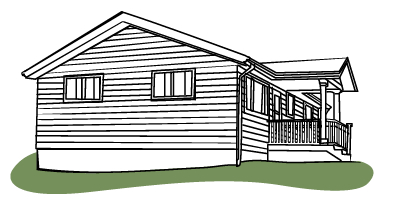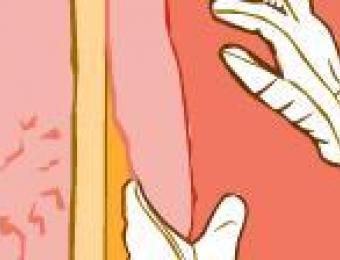What is vinyl cladding?
Vinyl (or plastic, or PVC) cladding is an external wall material that is often installed as an alternative to weatherboard planks. Other styles of vinyl cladding are available too, including shingles and vertical panels. Replica logs and stones are also available in vinyl.

Why install vinyl cladding?
Vinyl is the cheapest cladding option available. It is also reasonably durable - it won't rot and it is impervious to insects. Vinyl cladding is light and easy to install, and comes in a wide variety of colours and styles. The colours are cast into the vinyl resin and therefore they won't chip or scratch off.
Vinyl cladding does have some negative features though. It's normally a poor insulator on its own, and may not be as fireproof as some other options. There are also concerns about the environmental impacts of the manufacturing and disposal of vinyl cladding.
How is vinyl cladding installed?
Vinyl cladding is typically hung either by nailing it or gluing it to the exterior wall sheath. If you are planning on installing vinyl cladding over the top of existing weatherboards, any exterior wall material that isn’t wood needs to be removed first. Vinyl will expand and contract in weather, and nailing it too tightly might cause it to crack.
Maintenance
Older types of vinyl cladding are prone to cracking and fading. If you experience this issue, individual boards can be painted or replaced if necessary. If you're painting over it, make sure you select a paint that will expand and contract with the vinyl. Cracking and fading is less of a concern with newer types of vinyl cladding, which require little maintenance other than a yearly wash.
|
Advantages
|
Disadvantages
|





